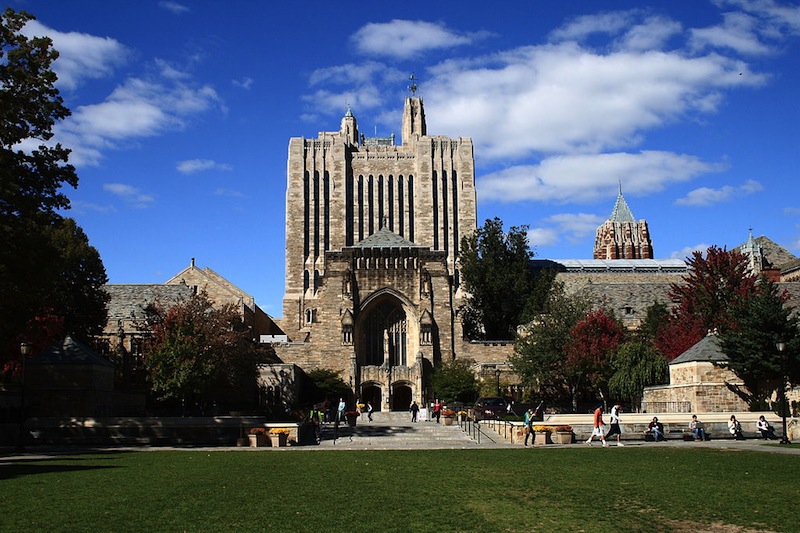Campus planning is a complicated business. Although experts have developed methodologies to organize and set priorities, the focus typically falls on repairing the bricks and mortar, without consideration of current or future program priorities. So as campuses across the world bustle with back to school activity this fall, I offer these insights for improving campus planning.
Lesson One: You need to get the lay of the land.
Dwight Eisenhower once said, “Whenever I run into a problem I can’t solve, I always make it bigger. I can never solve it by trying to make it smaller, but if I make it big enough, I can begin to see the outline of a solution.”
No matter how long you have been at an institution, there are things that you don’t know. Start with a campus-wide building condition assessment and set priorities with an analysis of:
- Physical condition
- Architectural or historic significance
- Adaptability for repurposing
- Site redevelopment opportunity
- Current space utilization
Combine this physical analysis with a campus-wide, long-term programmatic overview.
Lesson Two: Be broadly consultative. No top down here!
Space is a campus-wide need. Optimal results follow broad consultation with administrative, academic and student life leadership. Optimizing programmatic synergy and adjacency requires a deep understanding of higher education and the ability to ask the right question to the right people. Only then can you understand their priorities and how their long-term vision intersects with the realities of the institution’s academic real estate portfolio.
Work with the team of academic stakeholders to compare your campus’ inventory of academic space against the faculty’s approach. Analysis of your classroom and lab usage might reveal underuse of inflexible teaching and research spaces that don’t support the faculty’s current and anticipated pedagogical approach, and oversubscription of flexible spaces that can be reconfigured at a moment’s notice.
Lesson Three: Flexibility is critical to the success of the plan.
As important as a comprehensive plan is to your work, understand that it will change over time as priorities shift. Set a flexible planning framework that acknowledges program and physical priorities. As priorities will change depending on your institution’s strategic and academic goals (and even a changing of the guard), be prepared to adjust the capital plan every year. A wise strategic planner once noted, “A strategic plan should be written in pencil and the pencil needs an eraser.”
 Yale's Sterling Memorial Library. Photo: Sage Ross/Wikimedia Commons
Yale's Sterling Memorial Library. Photo: Sage Ross/Wikimedia Commons
Lesson Four: Be prepared for road blocks and surprises.
Your comprehensive framework will help you understand the road ahead and break it into manageable pieces. Changing priorities (and budgets) might require you to move projects around, and sometimes even cut a program short. As you plan projects, break them into self-contained modules, each of which will result in qualitative improvement. This way, if subsequent phases are not completed, your interim accomplishments will still be worth the efforts and investment.
Yale’s Sterling Memorial Library master plan revealed the need for a $100M investment-in 1992. With life safety and preservation of the collection identified as the highest priorities, this project became the first phase of a multi-year plan. After a debt-funded $35M project, the University was able to proceed at a more leisurely pace to design and raise money for subsequent phases. The entire project was implemented over 20 years.
This planning process will likely uncover collateral projects. Consider this example: A new chemistry building will be built to accommodate the most utility-intensive research group on campus. The capital budget must address not just the cost of the new building, but also the extension of utilities to the new building (an enabling project) and the renovation of the space “left behind” (a backfill project).
Lesson Five: You may already have the solution.
Thinking of it as a throw-away, it might be tempting to try to avoid the need for temporary space by phasing construction. In the long-run, swing space is typically more cost effective than phasing or working in an occupied building, even in leased space. But where to find available square footage? And how to minimize throw-away?
Perhaps one of the to-be-built projects in your long-term capital plan can be accelerated, used as temporary swing space, and ultimately deployed for its original programming. This solves your short-term problem and can help offset your building costs or enable cost sharing.
Lesson Six: Communicate. Communicate. Communicate.
With stakeholders involved from both academic and administrative departments, communication will be key. As anyone in communications will tell you, “People don’t read,” so be sure that your communications strategy extends beyond periodic email updates.
The most successful projects are ones in which you communicate what you plan to do and, even more importantly, what you plan not to do. It’s the best way to manage expectations…and minimize disappointment.
As you sharpen your pencils this fall and learn your own lessons, please share them with me.
About the Author: Pamela Delphenich, FAIA, leads the Education practice area in the Boston office. Before rejoining Gensler after a gap of more than 25 years, she directed campus planning for the Massachusetts Institute of Technology, where she spearheaded MIT 2030, establishing a 20-year vision for campus renewal and growth. Previously, she oversaw all physical design and development at Yale University, and directed Yale’s Framework for Campus Planning which established a roadmap for Yale’s comprehensive renewal program. Contact her at pamela_delphenich@gensler.com.
More from Author
Gensler | Oct 21, 2024
3 surprises impacting the return to the office
This blog series exploring Gensler's Workplace Survey shows the top three surprises uncovered in the return to the office.
Gensler | Jun 26, 2024
5 ways ESG can influence design and create opportunities
Gensler sustainability leaders Stacey Olson, Anthony Brower, and Audrey Handelman share five ways they're rethinking designing for ESG, using a science-based approach that can impact the ESG value chain.
Gensler | May 20, 2024
10 spaces that are no longer optional to create a great workplace
Amenities are no longer optional. The new role of the office is not only a place to get work done, but to provide a mix of work experiences for employees.
Gensler | Apr 15, 2024
3 ways the most innovative companies work differently
Gensler’s pre-pandemic workplace research reinforced that great workplace design drives creativity and innovation. Using six performance indicators, we're able to view workers’ perceptions of the quality of innovation, creativity, and leadership in an employee’s organization.
Gensler | Mar 13, 2024
Trends to watch shaping the future of ESG
Gensler’s Climate Action & Sustainability Services Leaders Anthony Brower, Juliette Morgan, and Kirsten Ritchie discuss trends shaping the future of environmental, social, and governance (ESG).
Gensler | Feb 15, 2024
5 things developers should know about mass timber
Gensler's Erik Barth, architect and regional design resilience leader, shares considerations for developers when looking at mass timber solutions.
Gensler | Jan 15, 2024
How to keep airports functional during construction
Gensler's aviation experts share new ideas about how to make the airport construction process better moving forward.
Gensler | Dec 18, 2023
The impacts of affordability, remote work, and personal safety on urban life
Data from Gensler's City Pulse Survey shows that although people are satisfied with their city's experience, it may not be enough.
Gensler | Nov 16, 2023
How inclusive design supports resilience and climate preparedness
Gail Napell, AIA, LEED AP BD+C, shares five tips and examples of inclusive design across a variety of building sectors.
Gensler | Oct 16, 2023
The impact of office-to-residential conversion on downtown areas
Gensler's Duanne Render looks at the incentives that could bring more office-to-residential conversions to life.
















